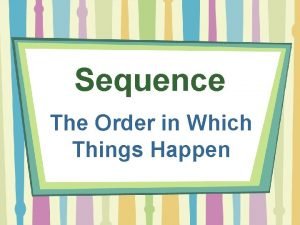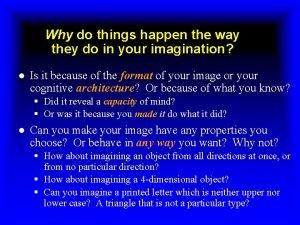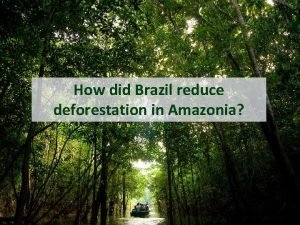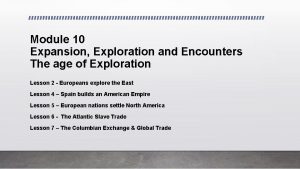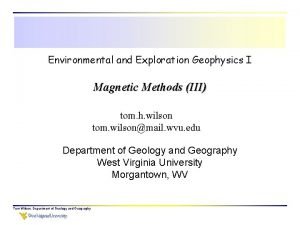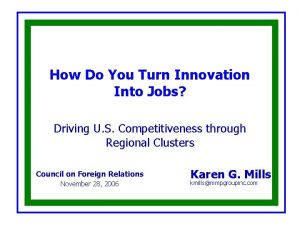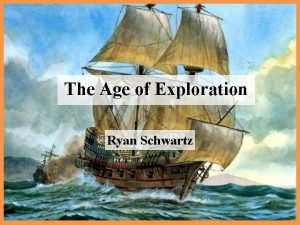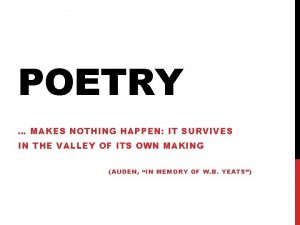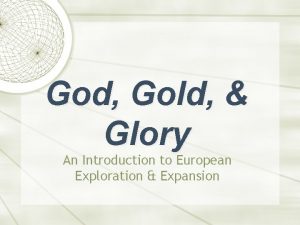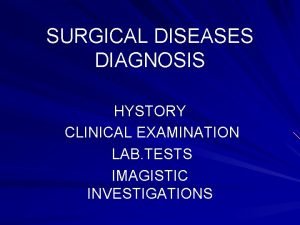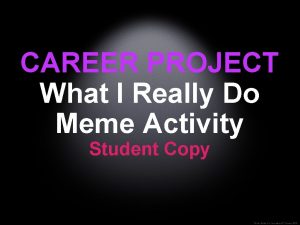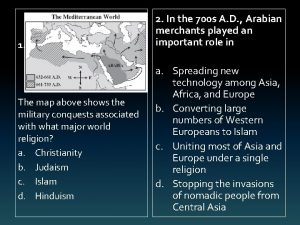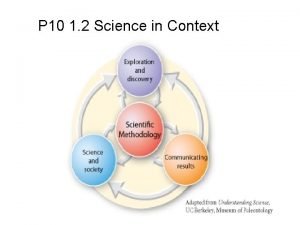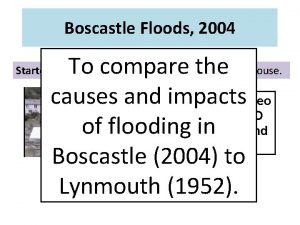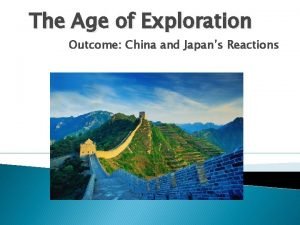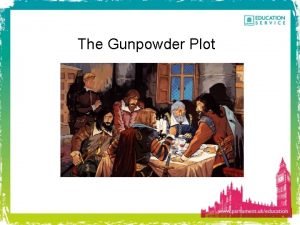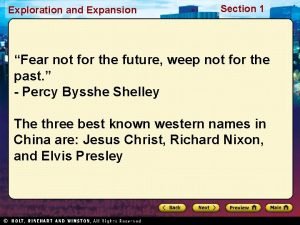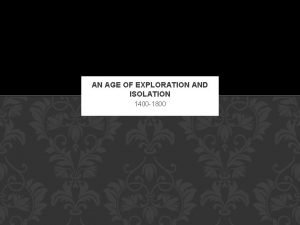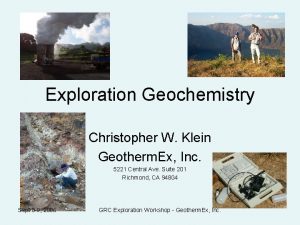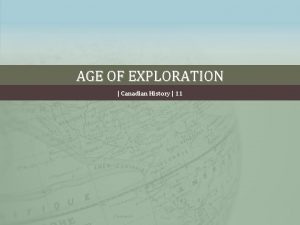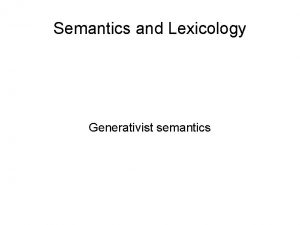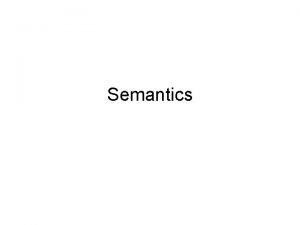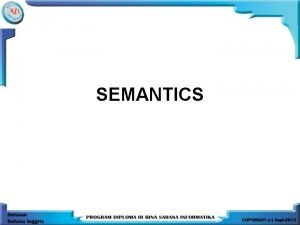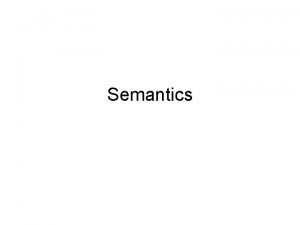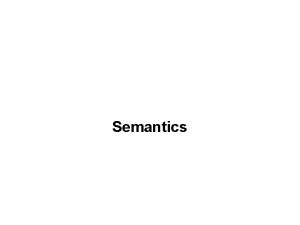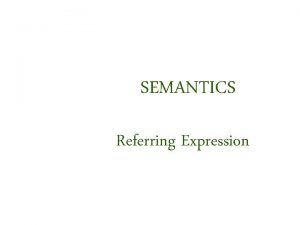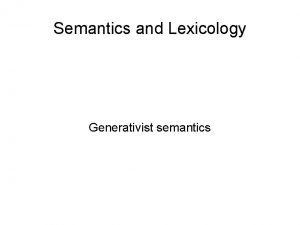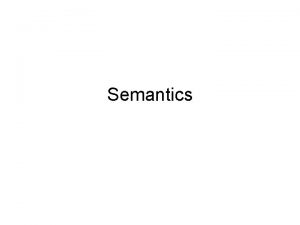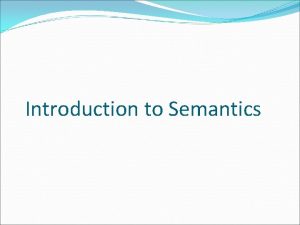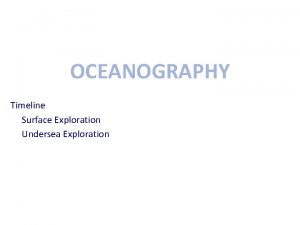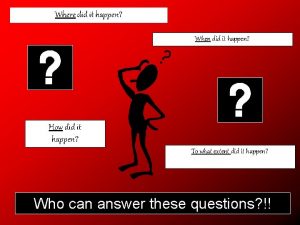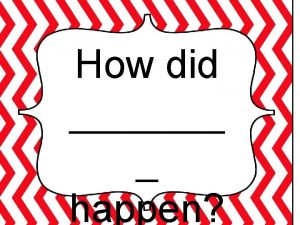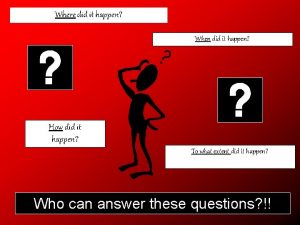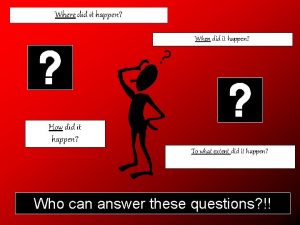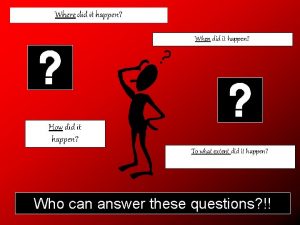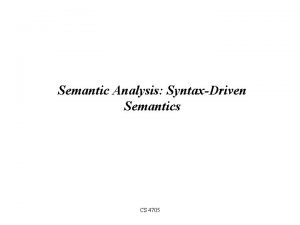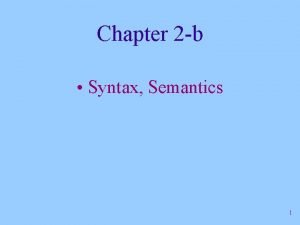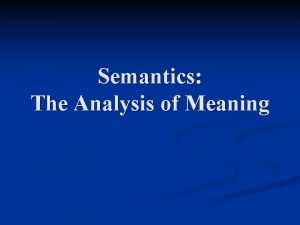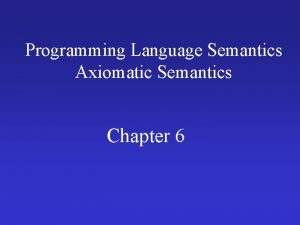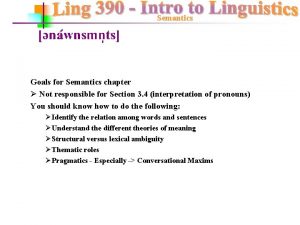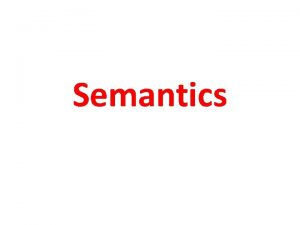The Semantics of Things that Happen an exploration













































































- Slides: 77

The Semantics of Things that Happen an exploration Mike Bennett Ontolog Forum, 5 November 2015 1

Outline • • • Brief introduction to FIBO The requirements for occurrent Issues with current placeholders A philosophical investigation Occurrent pairwise disjoint facets Conclusions and discussion starters 2

Introducing FIBO 3

Financial Industry Data Standards 4

Disparate Data ? ? ? ? ? 5

Unified Semantics Conceptual ontology Shared business meanings 6

Business Validation Conceptual ontology Validated by business Shared business meanings 7

Formal Logic Representation Conceptual ontology Validated by business Expressed logically Shared business meanings 8

Finance Industry Language • Terminology / Vocabulary – Focus is on words – Different people use the same words for different concepts and different words for the same concepts • Data Dictionary – Documents the meaning or meanings of individual data elements – Good design means one data element has many applications • Ontology – Each element in the model represents on concept 9

The FIBO Moment • Previous standardization efforts at message and data levels • Arguments over terms • Atkin: “What if we considered the concepts without worrying about the words people use? ” – Sudden outbreak of peace! 10

The FIBO Principles • Concepts not Words • Meanings are grounded in the terms of law, contract etc. • Use of upper level abstractions 11

Upper Ontology Partitions 12

Continuants and Occurrents Thing Continuant Occurrent 13

Continuants and Occurrents Thing Continuant • Continuant: where it exists, it exists in all its parts – Even if these change over time Occurrent • Occurrent: the concept is only meaningful with reference to time 14

Continuants and Occurrents Thing Continuant Person Contract • Continuant: where it exists, it exists in all its parts Occurrent Pilot – Even if these change over time Event State Etc. • Occurrent: the concept is only meaningful with reference to time 15

Ontology Partitioning Thing Continuant Person Contract Occurrent Pilot Event State Etc. • Things which are independent or relative are also either continuant or occurrent 16

Continuants and Occurrents Example Thing Continuant Me Occurrent My life • Me: where I exist I • My life: happens exist in all my over a period of parts time and cannot – Even if these change over time be defined without time 17

Why does this Matter? • Frame concepts which have a temporal component which are of interest to the business – Events, activities – Statuses, prices, other time-variant concepts • Provide a basis for ontological modelling of business process • This brings the two sides of development (structural and behavioural) into the same conceptual model 18

FIBO Occurrent Things Placeholders • • Event Activity Process (e. g. securities issuance) Corporate events Lifecycles Interest Accrual Conditions and triggers Transacton workflow / payments process 19

Event 20

Activity 21

Process 22

Process 23

Terms Derived from REA Ontology 24

ISO 15944 -4 25

REA Basic Terms 26

Occurrents 27

Txn Event 28

Txn Event Detail – Undertakings 29

Ontology Summit 2014 Risk Hackathon 30

Initial Diagram for Risk Concepts 31

Risk Concepts Ontology 32

Risk Concepts Ontology 33

Event Ontology Design Pattern 34

What is Event? • Event as something with a time and a place? • Event as a relationship between 2 states? • Event as every kind of “Occurrent Thing”? 35

Other Occurrent Requirements Occurrent thing Something which really happens (at some time) Definitive Occurrent Definition of what should happen (repeatable) Prescriptive Occurrent Descriptive Occurrent Historic Occurrent Predictive Occurrent Process Definition Plan Method 36

Philosophical Investigation 37

Achievements and Attainments • Stanford Encyclopedia • DOLCE • Some reactions and followups 38

Definitions • From – http: //www. researchgate. net/post/Perdurant_oc currents_and_perdurant_continuants_definitions _and_implications 39

Continuants and occurrents. • Continuants correspond largely to physical bodies, objects, and particular masses of matter, while occurrents correspond to events, processes, and - perhaps - momentary states. Here, I employ the following distinction: – a continuant is constructed as a spatial entity that has all its parts at an instant t, and no spatial parts at any other instant – an occurrent is constructed as a temporal entity that has only one part, or that has sequential temporal parts. 40

Endurants and perdurants • In contemporary theories of persistence, a persisting entity either endures by having all its parts at any instant; or perdures by having parts at sequential instants. More generally, – an endurant has no temporal parts (or, at least, no conceptually distinguishable temporal parts) and thus exists in its entirety at each instant of its existence – a perdurant has temporal parts, and is at least temporally extended. 41

Discussion • Continuant: – Leibniz’s Law • Identity is based on having the same properties • However, parts and other properties change over time – They key is identity – “A thing which continues in its identity” – Reject the explicitly “spatial” element of the definition • A commitment is a continuant 42

Discussion • Occurrent – Some commentators suggest that time scale plays a part in the definition • We reject this – Use the perdurant definition – The concept is temporal in its definition • Bit it need not be instantaneous • A thing consisting entirely of temporal parts is itself an occurrent/perdurant 43

FIBO Working Definitions • Continuant: – Definition: “something which exists and retains its identity across points in time” – Explanatory Note: These persist over time even when their constituents alter over time • Occurrent: – Definition: “something which is defined wholly with reference to time or which consists of one or more things which are defined wholly with reference to time” – Explanatory Note: These are extended in time and so are only partly present at any time in which they exist 44

Extensions • DOLCE has 4 extensions of perdurant – – Achievement Accomplishment State Process • We need some clarity on achievement versus accomplishment, since the English words are synonymous – need to determine what are the assertions that distinguish these 45

DOLCE Light • DOLCE Light left out a lot of the endurant v perdurant stuff, and simply said • there is an object, which is something that is rather than something that happens; • and then there is Event, which is something that happens. • These are the same concepts with different labels 46

DOLCE Explanation Source: http: //www. inf. ed. ac. uk/teaching/courses/kmm/PDF/L 7 -DOLCE. pdf 47

DOLCE Explanation Source: http: //www. inf. ed. ac. uk/teaching/courses/kmm/PDF/L 7 -DOLCE. pdf 48

Wikipedia Definitions • Endurant – Also known as continuants, or in some cases as "substance", endurants are those entities that can be observed-perceived as a complete concept, at no matter which given snapshot of time. Were we to freeze time we would still be able to perceive/conceive the entire endurant. – Examples include material objects (such as an apple or a human), and abstract "fiat" objects (such as an organization, or the border of a country). • Perdurant – Also known as occurrents, accidents or happenings, perdurants are those entities for which only a part exists if we look at them at any given snapshot in time. When we freeze time we can only see a part of the perdurant. – Perdurants are often what we know as processes, for example: "running". If we freeze time then we only see a part of the running, without any previous knowledge one might not even be able to determine the actual process as being a process of running. Other examples include an activation, a kiss, or a procedure. 49

Events (SEP) 50

Events (sorted) • These are not the labels we will use • Ontology is about the concepts 51

Comments • Achievement and Accomplishment – As labels these were not helpful to business SMEs – Also not clear if we would use them in FIBO – Meanwhile, each represents a combination of concepts per the 2 x 2 table • Conclusion – Separate out the distinct meanings – Pairwise disjoint facets – Also support earlier use cases for e. g. process as prescriptive occurrent 52

Proposals • Faceted classification • Some proposed facets • Extending and using these 53

Faceted Classification Thing 54

Faceted Classification Thing Red Thing Blue Thing Differentiae: what distinguishes the sub types of the Thing 55

Faceted Classification Thing Round Thing Square Thing Differentiae: what distinguishes the sub types of the Thing 56

Faceted Classification Thing Red Thing Round Red Thing Blue Thing Round Blue Thing Square Thing etc. 57

In initial prototyping environment • (Sparx EA, with visual representation of OWL constructs but not RDF export) • Facets: – Culminating – Prescriptive – Functional • Purposeful – Instantaneous • Linking provisionally to FIBO placeholders 58

*geneous 59

Occurrent Facets 60

Culminating Facet 61

Telic: Function v Purpose • Telic can be read as being something with a function • Some interpretations attribute intent to the notion of function – We reject this – see e. g. Finke • http: //www. patheos. com/blogs/camelswithhammers/2011/10/na tural-functions/ – A hand has a function but no designer intended that function • Functional occurrent is superclass of purposeful occurrent – We would not use a word like telic anyway – Functional = Telic 62

Functional and Purposeful 63

Instantaneous Facet 64

Prescriptive 65

Prescriptive detail 66

Goal 67

Ongoing and Purposeful 68

Implementation • Move these into Cameo Conceptual Modeler for onward RDF/OWL generation • Still needed to address the question of State 69

Occurrent Facets 70

What is State • There are two concepts often referenced by the word “State” – The state something is in • E. g. being red, being in default • Per State Transition Diagrams • This is occurrent – The state itself • The state of redness, the state of default • This is a continuant thing • It is also abstract (does not have concrete members in the world) 71

State Concepts 72

Achievement and Accomplishment Homogeneous Culminating Occurrent Stanford “Achievement” Heterogeneous Occurrent Thing Non Culminating Occurrent Purposeful Occurrent Non Purposeful Occurrent Stanford “Accomplishment” 73

Achievement and Accomplishment Homogeneous Instantaneous Occurrent Stanford “Achievement” Heterogeneous Occurrent Thing Durative Occurrent Purposeful Occurrent Non Purposeful Occurrent Stanford “Accomplishment” 74

Occurrent Facets Uses Homogeneous Instantaneous Occurrent Thing Durative Occurrent Purposeful Occurrent Heterogeneous Non Purposeful Occurrent Definitive Occurrent Interest Accrual Achievement of a Milestone Culmination of a goal-directed activity = Milestone? Not quite *Reserved word Process Think of this as Then split this into prescriptive Interest Payment (one meaning of) and descriptive Process* Series: Sequences of the same thing Has a start and an Ordered sequences of (different) things end but has a duration 75

Summary and Discussion Points • We needed high level primitive concepts within which to frame various things which happen in finance • These need not be highly axiomatized – rather, we want to ground out the meanings of a minimum set of primitive concepts so other concepts are derivable from these by use of axioms • Analysis of existing concepts revealed multiple concepts – So we segregated these into pairwise disjoint facets – Have identified a possibly complete (? ) set of facets – State was a challenge as it is two things only one of which is occurrent • Have we defined a high level language from which to articulate things which happen? 76

Thank You! • Mike Bennett – mbennett@edmcouncil. org – mbennett@hypercube. co. uk – www. edmcouncil. org – http: //www. edmcouncil. org/semanticsrepository/ index. html 77
 Sequence words
Sequence words Compare procedural semantics and declarative semantics.
Compare procedural semantics and declarative semantics. Thơ thất ngôn tứ tuyệt đường luật
Thơ thất ngôn tứ tuyệt đường luật Tôn thất thuyết là ai
Tôn thất thuyết là ai Phân độ lown
Phân độ lown Chiến lược kinh doanh quốc tế của walmart
Chiến lược kinh doanh quốc tế của walmart Gây tê cơ vuông thắt lưng
Gây tê cơ vuông thắt lưng Block xoang nhĩ
Block xoang nhĩ Tìm vết của đường thẳng
Tìm vết của đường thẳng Sau thất bại ở hồ điển triệt
Sau thất bại ở hồ điển triệt Thể thơ truyền thống
Thể thơ truyền thống Con hãy đưa tay khi thấy người vấp ngã
Con hãy đưa tay khi thấy người vấp ngã Why things happen the way they do
Why things happen the way they do Venn diagram of living and non living things
Venn diagram of living and non living things Life processes in living things
Life processes in living things Vẽ hình chiếu vuông góc của vật thể sau
Vẽ hình chiếu vuông góc của vật thể sau Các châu lục và đại dương trên thế giới
Các châu lục và đại dương trên thế giới Bổ thể
Bổ thể Thế nào là mạng điện lắp đặt kiểu nổi
Thế nào là mạng điện lắp đặt kiểu nổi Lời thề hippocrates
Lời thề hippocrates Vẽ hình chiếu đứng bằng cạnh của vật thể
Vẽ hình chiếu đứng bằng cạnh của vật thể Quá trình desamine hóa có thể tạo ra
Quá trình desamine hóa có thể tạo ra Phép trừ bù
Phép trừ bù Chúa sống lại
Chúa sống lại Khi nào hổ mẹ dạy hổ con săn mồi
Khi nào hổ mẹ dạy hổ con săn mồi Các loại đột biến cấu trúc nhiễm sắc thể
Các loại đột biến cấu trúc nhiễm sắc thể điện thế nghỉ
điện thế nghỉ Nguyên nhân của sự mỏi cơ sinh 8
Nguyên nhân của sự mỏi cơ sinh 8 Công của trọng lực
Công của trọng lực Tỉ lệ cơ thể trẻ em
Tỉ lệ cơ thể trẻ em Thiếu nhi thế giới liên hoan
Thiếu nhi thế giới liên hoan Fecboak
Fecboak Một số thể thơ truyền thống
Một số thể thơ truyền thống độ dài liên kết
độ dài liên kết Các môn thể thao bắt đầu bằng tiếng nhảy
Các môn thể thao bắt đầu bằng tiếng nhảy Hát kết hợp bộ gõ cơ thể
Hát kết hợp bộ gõ cơ thể Hệ hô hấp
Hệ hô hấp Số nguyên là gì
Số nguyên là gì Tư thế ngồi viết
Tư thế ngồi viết đặc điểm cơ thể của người tối cổ
đặc điểm cơ thể của người tối cổ Trời xanh đây là của chúng ta thể thơ
Trời xanh đây là của chúng ta thể thơ Voi kéo gỗ như thế nào
Voi kéo gỗ như thế nào ưu thế lai là gì
ưu thế lai là gì Thẻ vin
Thẻ vin Cái miệng nó xinh thế chỉ nói điều hay thôi
Cái miệng nó xinh thế chỉ nói điều hay thôi Thế nào là hệ số cao nhất
Thế nào là hệ số cao nhất Frameset trong html5
Frameset trong html5 Từ ngữ thể hiện lòng nhân hậu
Từ ngữ thể hiện lòng nhân hậu Diễn thế sinh thái là
Diễn thế sinh thái là Tư thế ngồi viết
Tư thế ngồi viết V. c c
V. c c Các châu lục và đại dương trên thế giới
Các châu lục và đại dương trên thế giới Mật thư anh em như thể tay chân
Mật thư anh em như thể tay chân Glasgow thang điểm
Glasgow thang điểm Khi nào hổ mẹ dạy hổ con săn mồi
Khi nào hổ mẹ dạy hổ con săn mồi đại từ thay thế
đại từ thay thế Why did this happen
Why did this happen Expansion exploration and encounters
Expansion exploration and encounters Magnetic field intensity
Magnetic field intensity Upstream oil exploration
Upstream oil exploration Vasco nunez de balboa motives for exploration
Vasco nunez de balboa motives for exploration Why did the battle of lexington and concord happen
Why did the battle of lexington and concord happen Poetry makes nothing happen lamented
Poetry makes nothing happen lamented God gold and glory age of exploration
God gold and glory age of exploration Exploration synonims
Exploration synonims What my friends think i do meme
What my friends think i do meme The map above shows the exploration route taken by
The map above shows the exploration route taken by Exploration and discovery where ideas come from
Exploration and discovery where ideas come from Boscastle flood causes
Boscastle flood causes What was the outcome of china's age of exploration?
What was the outcome of china's age of exploration? Space exploration webquest answer key
Space exploration webquest answer key November 5 1605
November 5 1605 College make it happen
College make it happen Exploration images
Exploration images An age of exploration and isolation
An age of exploration and isolation Exploration
Exploration Alonso alvarez de pineda route
Alonso alvarez de pineda route Samuel de champlain exploration route
Samuel de champlain exploration route
